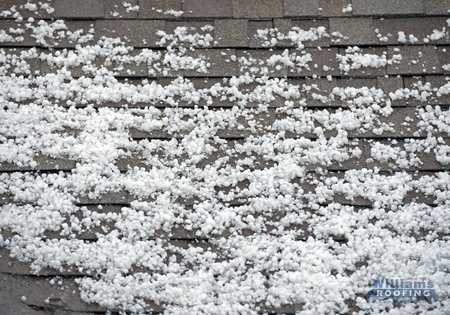Reports indicate that 3,763 hail storms occurred in the U.S. in 2021. Unfortunately, hail hitting your business’s roof can be damaging.
So if a storm sweeps through your community, you might want to assess the damage it might have done to your roof. But how do you evaluate storm damage to a roof?
You’re free to assess it yourself if you know how, but most people don’t know how to do this properly. So they hire roofing companies to do it for them.
Keep reading this guide to learn more about assessing roof damage after a storm harms your commercial roof.
Know When to Look for Storm Damage
The first thing to consider is when to look for roof storm damage.
In some situations, knowing when to look is obvious. For example, you’ll know to look if a tornado came through your city. You’ll also know to look if you can see damage in your yard or nearby areas.
However, storm damage isn’t always this obvious. Sometimes, the signs are subtle, yet they’re still present.
For example, you should consider assessing your roof damage after a major thunderstorm occurs. In addition, it would also help if you looked at your roof after a hail or windstorm sweeps through your area.
In fact, it’s helpful to assess a commercial roof if you have any questions or concerns about it. After all, it doesn’t hurt to look at it. Plus, it’s better to find out sooner rather than later.
Damage Storms Do to Roofs
Storms can come out of nowhere and cause significant or minor damage to a roof. Additionally, it doesn’t matter what type of roof your commercial building has. A storm can damage any roof type.
So, what types of roofing storm damage happen? Here are some of the common types:
Hail Damage
When large hail hits the roof, it might leave marks. The primary mark is a dent in the roofing materials, but hail also causes cracks and punctures in commercial roofing materials.
Small dents and cracks might not need repairs, but large ones will, as they can weaken your roof. A weakened roof is subject to water damage.
Missing Materials
High winds also damage roofs, and one of the primary results of wind is missing roofing materials. For example, high wind can rip flat roofing materials or metal off a roof.
Puddling Water
Flat roofs and roofs with valleys might also experience water damage from storms. An example of this is puddling water on a roof. A roof shouldn’t have water puddles on it, even if it’s a flat roof.
Water on a roof damages and weakens the roofing materials and increases the risk of mold, moss, and mildew forming on the roof.
Debris on the Roof
Storms might also leave debris on a roof. For example, tree branches might land on your commercial roof after a storm. Debris on a roof can rot and cause problems that you must address.
Protect Your Roof Immediately
While preparing a roof for a storm is always the best option, there are times when this isn’t feasible. However, if you suspect storm damage, it would be helpful to protect your roof quickly.
For example, if you have a damaged roof, such as missing roof materials, you might want to cover the roof with a tarp right away. The tarp will stop more water from entering inside your building.
You should also remove any debris you see on your roof and take any other necessary steps to prevent the damage from causing more harm.
Schedule a Roof Inspection
Next, you should contact a roofing company for a roof inspection. A roof inspection is available for commercial roofs through commercial roofing companies.
The company will climb onto your building’s roof during a roof inspection to assess the storm damage. They’ll take pictures and notes of the damage they see. Next, they’ll show you what they found.
They’ll also explain the damage they found and the repair options. The roofing contractor might be able to repair the roof if it has minor damage.
However, they might suggest replacing the roof if the damage is severe. They can give you a quote for the repair services and complete the work for you.
You can trust they’ll find all the damage and fix everything during the repairs.
Contact Your Insurance Company
You might also want to contact your building insurance company before proceeding. Roofing damage is generally covered with most building insurance policies.
However, you can find out your coverage by speaking with your agent. Your agent will review the policy, and they might want to send an adjuster to view the damage.
Your insurance company might cover the repair costs if your policy includes this coverage. They must also verify that the damage occurred from a storm before they approve the insurance claim.
Hire a Professional for Storm Damage to a Roof
The final thing to understand is that you’ll need a professional roof contractor to fix a damaged roof after a storm. Professional commercial contractors know the ins and outs of commercial roofs.
They’ll make sure they inspect every inch of the roof to locate all the damage. Additionally, they’ll complete the best repairs for your roof, providing you with a strong roof that protects your business.
Additionally, it’s helpful to address roofing issues quickly. After all, unaddressed roofing problems can affect your business’s operations, so get the help you need quickly.
Learn More About Storm Damage Roof Repairs
Do you think you might have storm damage on your commercial roof? Storm damage to a roof affects your entire structure, so you shouldn’t hesitate.
Instead, you’ll need to protect your roof immediately and get the repairs you need.
Contact us at Williams Roofing & Construction Inc. We offer commercial roof repairs in Peoria, Champaign, Bloomington, and Springfield for all types of roofs.

